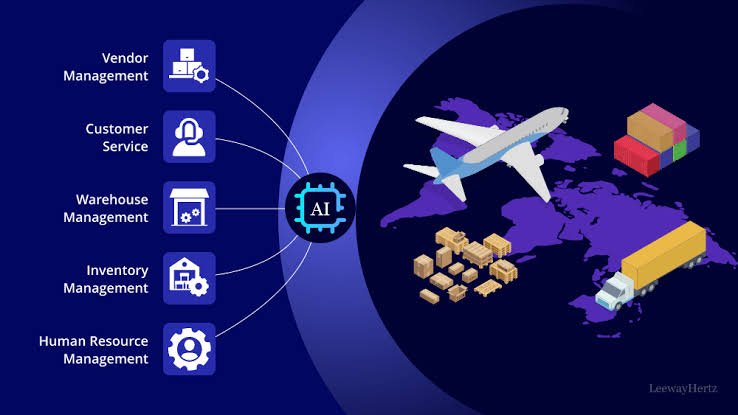Global supply chains are more complex and fragile than ever—exposed to geopolitical upheavals, climate events, and shifting consumer demands. AI‑driven logistics transforms reactive firefighting into proactive optimization, reducing costs and boosting resilience.
1. Key AI Capabilities in Supply Chain
- Demand Forecasting
- Time‑Series Models: LSTM and Prophet networks ingest historical sales, promotions, and seasonality to predict future demand with ~90% accuracy.
- External Data Fusion: Incorporate weather, social‑media sentiment, and economic indicators for dynamic adjustments.
- Inventory Optimization
- Safety‑Stock Modeling: Uses Monte Carlo simulations to set buffer levels that balance stock‑out risks against carrying costs.
- Multi‑Echelon Optimization: Coordinates inventory across warehouses, distribution centers, and retail outlets to minimize total system cost.
- Dynamic Routing & Scheduling
- Vehicle Routing Problem (VRP) Solvers: AI‑powered solvers adjust routes in real time for traffic, weather, and delivery windows.
- Autonomous Vehicles & Drones: Pilot programs in warehousing (AGVs) and last‑mile delivery drones reduce labor bottlenecks.
- Supplier Risk Management
- Network Graph Analytics: Map tier‑n suppliers and run “stress tests” on nodes vulnerable to disruption (e.g., single‑source parts).
- Sentiment & News Scanning: NLP engines scan 24/7 for supplier bankruptcy signals, labor strikes, or regulatory changes.
2. Phased AI Adoption Roadmap
- Phase 1: Visibility & Data Cleanup
- Consolidate disparate ERP, WMS, and TMS systems.
- Standardize data schemas and resolve master‑data inconsistencies.
- Phase 2: Pilot Predictive Models
- Launch demand forecasting pilot for a top 10% SKUs.
- Compare AI forecasts against baseline statistical methods to quantify uplift.
- Phase 3: Integrated Optimization
- Deploy inventory and routing models in tandem—allowing for joint demand‑inventory‑logistics optimization.
- Implement real‑time dashboards with scenario simulation capabilities.
- Phase 4: Autonomous Execution
- Integrate with robotics and IoT actuators for automated loading, sorting, and self‑driving delivery when feasible.
3. Case Study: FMCG Leader’s Digital Transformation
- Company: A large Indian fast‑moving consumer goods (FMCG) manufacturer.
- Challenge: Frequent stock‑outs in rural markets and high transport costs in congested metros.
- Solution:
- AI demand forecasting improved SKU‐level forecasts by 18%.
- Multi‑echelon optimization cut inventory by 12% while reducing stock‑out rate from 7% to 2%.
- Dynamic routing saved 15% in fuel and driver hours.
- Impact: Overall supply‑chain cost down 8%, revenue gain of ₹120 crore from avoided stock‑outs.
4. Organizational & Change Management
- Cross‑Functional Teams: Embed data scientists alongside supply‑chain planners and IT—encouraging shared ownership.
- Training Programs: Upskill planners on interpreting AI outputs and refining model parameters.
- Governance: Establish an AI‑in‑SCM council to prioritize use cases, monitor KPIs, and manage vendor relationships.
5. FAQ
Q: How do I justify AI investment to leadership?
A: Start with a pilot on high‑impact SKUs or lanes. Quantify ROI from cost savings, service‑level improvements, and freed working capital.
Q: What are common pitfalls?
A: Poor data quality, lack of executive sponsorship, and treating AI as a one‑off project instead of an ongoing capability.
Conclusion
AI‑driven supply‑chain transformation turns complexity into competitive advantage. By progressing through visibility, pilot modeling, integrated optimization, and autonomous execution—and aligning teams around shared KPIs—organizations can build supply networks that are lean, agile, and resilient in the face of disruption.









